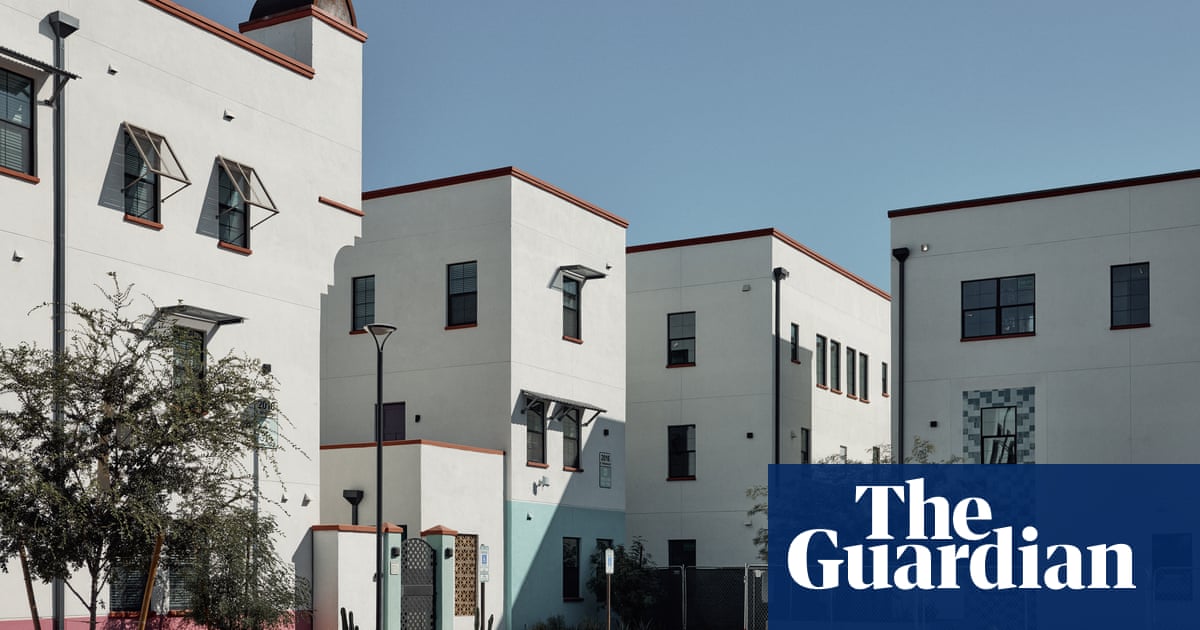It’s nice to see more car free places, but it’s also hard not to criticise the capitalistic hellscape in which your neighbourhood has a CEO
This is also in my city which during summer feels like an actual hellscape. It’s a great idea overall but damn if it’s the last city I’d pick for walking about 40% of the time.
The development’s buildings… are clustered together intimately to create inviting courtyards for social gatherings and paved – not asphalt – “paseos”, a word used in Spanish-speaking parts of the US south-west to denote plazas or walkways for strolling.
Importantly, such an arrangement provides relieving shade from the scorching sun – temperatures in these walkways have been measured at 90F (32C) on days when the pavement outside Culdesac is 120F (48C)
TL;DR: shade is a thing.
Also plants will help cool and reduce humidity in an area. They also make a neighborhood feel more inviting.
lol - I love when this gets (re-) posted periodically. The first time I read it I was thinking “out in the desert” when it said it was outside Phoenix. It’s not. It’s a single block (1 street x 1 ave) of space *in the middle of Tempe Arizona * with a 4 lane highway on one side. This is not a “no car utopia,” it’s a more-profit apartment complex that is using the “walkable city” greenwashing to cover the entire parcel with dense apartments (and limited, doomed retail) and not have to set aside mandatory parking to cut into profits. Last I looked, a 3BR rental was something like $35k-40k a year in rent.
Don’t get me wrong - the concept is nice, with good massing around the alleys and public spaces. This took planning. And it’s ~1/2 or 3/4 mile walk to a pretty major shopping area (across said 4 lane highway and a massive parking area at the mall). And that last part is good because there aren’t enough units in this development to support more than 1-2 restaurants and a bodega…it’s only about 1/4 to 1/3 the population needed to support a standard grocery store. And - as advertised- there’s no parking and Tempe isn’t walkable so you’re not getting any substantial outside customer traffic.
This is the best summary I could come up with:
Johnson has the mien of a tech founder, with his company logo T-shirt and fashionable glasses, and was part of the founding team of OpenDoor, an online real estate business.
The development’s buildings are a Mediterranean sugar-cube white accented with ochre, and are clustered together intimately to create inviting courtyards for social gatherings and paved – not asphalt – “paseos”, a word used in Spanish-speaking parts of the US south-west to denote plazas or walkways for strolling.
There is a small car park, although only for visitors, some disgorged by Waymo, the fleet of Google-owned driverless taxis that eerily cruise around Phoenix with their large cameras and disembodied voices to reassure passengers.
To calm any nerves about making the leap to being car-free, Culdesac has struck deals to offer money off Lyft, the ride-sharing service, and free trips on the light rail that runs past the buildings, as well as on-site electric scooters.
Culdesac can be seen, then, as not only a model for more climate-friendly housing – transportation is the US’s largest source of planet-heating emissions and, studies have shown, suburban sprawl fuels more of the pollution causing the climate crisis – but as a way of somehow stitching back together communities that have become physically, socially and politically riven, lacking a “third place” to congregate other than dislocated homes and workplaces.
Driving to places is so established as a basic norm that deviation from it can seem not only strange, as evidenced by a lack of pedestrian infrastructure that has contributed to a surge in people dying from being hit by cars in recent years, but even somewhat sinister.
The original article contains 1,478 words, the summary contains 271 words. Saved 82%. I’m a bot and I’m open source!



